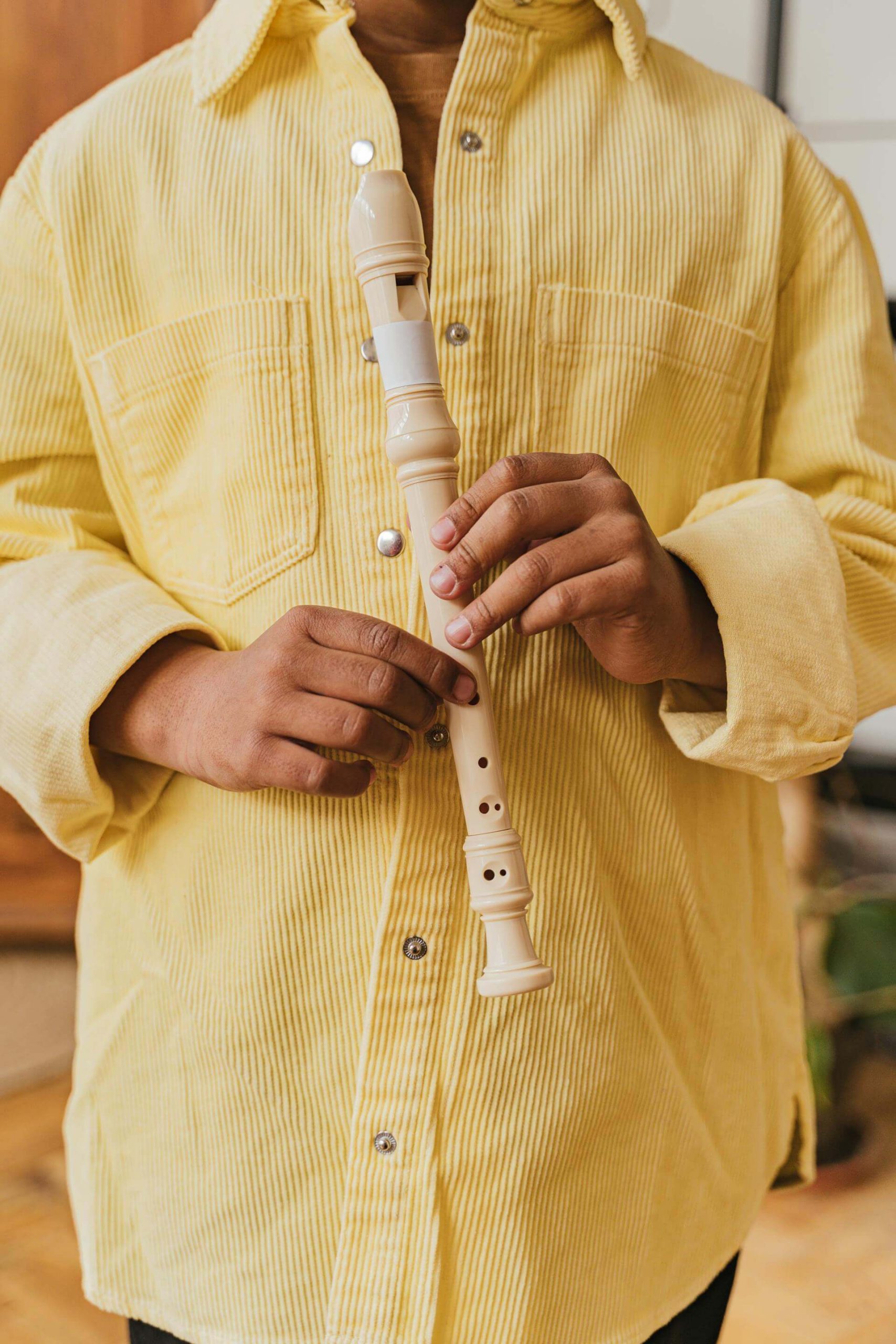Free online flute lessons from Swansea Music
Free Video Lessons for Learning to play the Flute
Learning to play the flute is an exciting and fun journey. It all starts with learning how to blow air gently across the mouthpiece. The flute has keys that you press in different combinations to create different notes, and with just a few notes like B, A, and G, you can start playing simple songs like Hot Cross Buns.

Getting Ready to Play the Flute
How to Set Up Your Flute
Our first video provides a clear, step-by-step guide on how to properly set up your flute before playing. It begins by showing how to carefully open the flute case and identify each part: the headjoint, body, and footjoint. Learn how to gently connect the pieces without twisting too hard or squeezing, aligning the parts correctly so that the embouchure hole, keys, and rods line up for good hand positioning. This is the perfect starting place for beginners, and helps young flute players build good habits from the start.
Basics of Embouchure
Embouchure (say: om-boo-shur) describes how you shape your lips and mouth when you play the flute. It’s super important because it helps you make a clear, beautiful sound.
Embouchure - Troubleshooting
So you’ve started learning how to shape your lips and blow — but the sound still isn’t quite right? Don’t worry; most flute players take a little time to get their embouchure just right.
Beginner Flute Lessons
Lesson 1 - B, A, & G
Lesson 2 - B, A, & G
Lesson 3 - B, A, & G
Practicing the Notes on your Flute
First Sounds & B
Moving on to A
Playing a G
Playing an F
Playing a Low E
Playing a C
Playing the Upper Notes from E to C
Start with a quick review of the correct fingerings for each note and then learn how small changes in embouchure and air speed can help produce a clear, strong sound in the higher range. Our Swansea Music teacher gives practical tips on using faster, more focused air and keeping the embouchure small and steady to hit the notes accurately. You will also get to see how posture and breath support make a big difference in tone quality. Ideal for advancing beginners, our free online video lessons help flute learners feel more confident.
Songs for Beginners
Beginners - Annie's Song
Beginners - God Save the Queen
Beginners - Mr Frog's Wedding
Beginners - Thank You Very Much
Scales and Arpeggios
B-flat Major (B♭) to a Twelfth
F major (2 Octaves)
Top E-flat (E♭) and F
Grade 1 - Scales
Grade 4 - Minor Scales (Harmonic)
Grade 4 - Major & Chromatic Scales
Grade 4 - Arpeggios & Dominant Sevenths
Practice Pieces to Play on Your Flute
Twinkle Twinkle and the Note D
Grade 2 - You Are My Sunshine
Grade 3 - Piece Pour Flute et Piano
Grade 3 - Four by Four
Grade 3 - Waltz
Grade 3 - On and Off Blues
Grade 4 - Mexican Hat Dance
Grade 4 - Boiling Point
Grade 5 - Music Hall
Grade 5 - Vivace
Grade 6 - Prelude (Accompanied Lesson)
Grade 8 - Poulenc Flute Sonata
A Musical Joke - Part 1
A Musical Joke was created by Wolfgang Amadeus Mozart. Composed in 1787, it is a satirical piece that pokes fun at the mistakes and awkward habits of less skilled composers and musicians of the time. Scored for two violins, viola, bass, and horns, the work includes deliberate “errors” such as clumsy harmonies, poor voice leading, and sudden key changes, all exaggerated for humorous effect.
A Musical Joke - Part 2
The piece showcases Mozart’s wit and deep understanding of musical form, allowing him to break the rules creatively to achieve comedic results. Often mistaken as a work by Beethoven due to its title or style, it remains one of Mozart’s most clever and entertaining compositions. While originally written for a string quartet with two horns, it can be arranged and played on flute. Flutists often play transcriptions or arrangements of classical works.